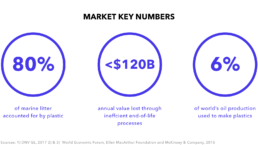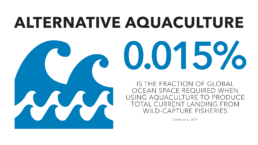Aquaculture is expected to grow significantly to meet the forecast aggressive demand for fish and shellfish. Improving environmental standards through modular, land-based systems, as well as alternative feedstocks and closed-loop systems, can provide new business opportunities and conserve natural marine ecosystems.
Aquaculture is the farming of aquatic organisms such as fish, shellfish, and plants. It is a significant part of the global food supply network, helping to feed the 1 billion people who rely on fish as their main protein source. It has been practised for thousands of years on a small scale but has taken off globally since the late 1800s. Considering that 85% of wild fisheries are overexploited, it is clear there is a need for sustainable aquaculture.
Negative environmental and social impacts have accompanied the industrialisation of aquaculture over the past 50 years and must be addressed. The capture of wild-caught juveniles, use of fishmeal as a feedstock, and excess nutrient pollution are all issues the industry is grappling with. There have, however, been advances in methodology that have led to improved environmental standards, especially in smallholder-scale farms.

Market Size and Demand Drivers
The global aquaculture market is estimated to be worth around $176 billion and is expected to grow at a CAGR of 4.6% up to 2022, making aquaculture is the world’s fastest growing food industry. The market has grown by 1,570% in the past four decades and is being driven by a combination of increasing demand for fish-based protein and a reduction in wild fishery capacity. As a result, we now consume more fish from aquaculture than from wild fisheries.

Products and Services
Innovations from the smallest to the largest scale can help aquaculture become a more sustainable industry, and those making use of these new opportunities are also more likely to receive greater economic returns, especially in the long run. For smallholders and coastal communities, adopting closed-loop systems and best practices can sustain a steady output without damaging natural ecosystems or putting unnecessary pressure on marine species. Aquacultures can even be set up in symbiosis with aquaponics, growing fish and vegetables simultaneously.
Land-based, modular systems such as FarmInABox offer low- and medium-income communities the opportunity to harvest a reliable output of fish, without the environmental consequences associated with ocean fish farming. By using waste or insects as feed, and collecting waste for fertiliser, fish farms can become integrated into a circular community approach.
Across all scales of aquaculture, alternative feed sources offer an opportunity to eliminate the need for wild fish feed, which can exacerbate overfishing rather than contribute to the solution. AgriProtein and Calysta are two great examples of this.
Aquaculture processes can also better harness the ecosystem services and inter-trophic links to maximise output, revenue, and environmental standards. Shellfish can provide excellent filtering services for polluted water, and can work in combination with plant-based production and fish harvesting. These integrated approaches to aquaculture are expected to unlock another $2 billion for the industry, but knowledge transfer can be the biggest barrier to overcome for developing countries.
This market is featured in the 2018 Global Opportunity Report.

